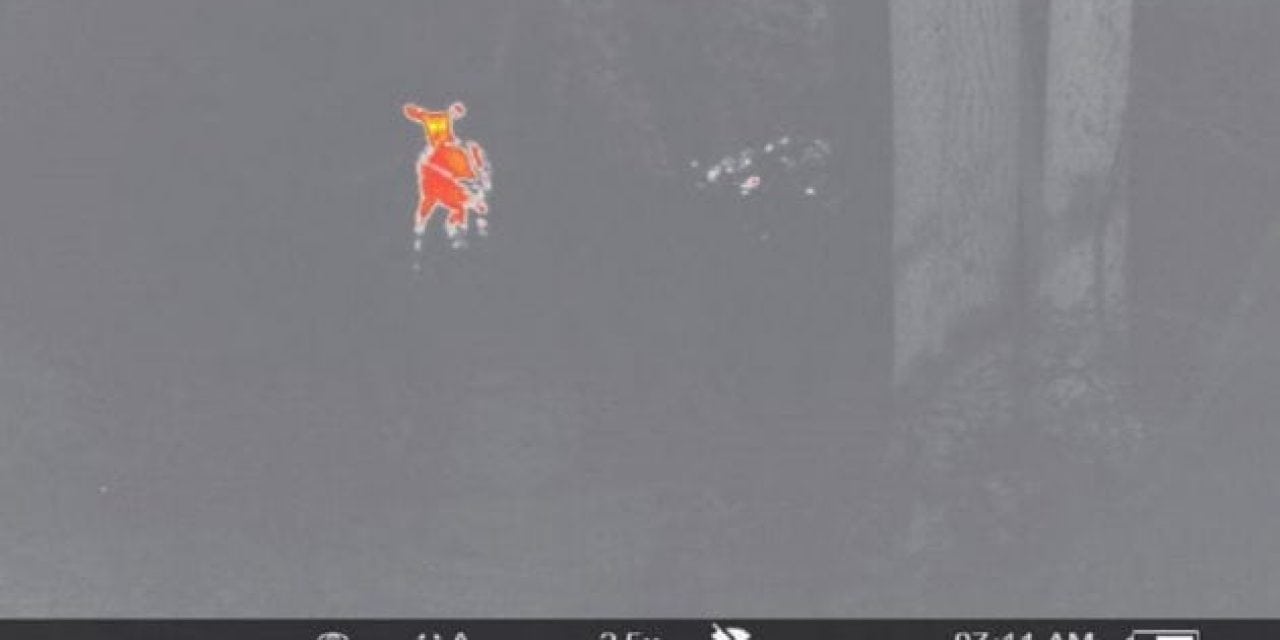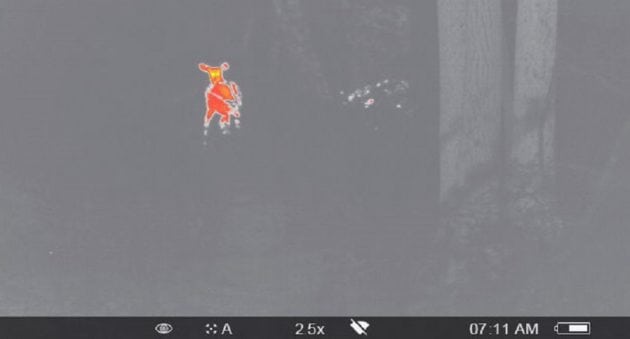
Animals often use the cloak of darkness to hide.
Thermal imaging brings these animals out of hiding. I’m personally a bit new to the thermal imaging world, so I needed some hands-on experience to get the full effect.
What we have in our hands for a 60-day test and evaluation is the Pulsar Helion XP50 Thermal Imaging Scope.
Little did I know this scope was about to open my eyes to a whole new world of optics.
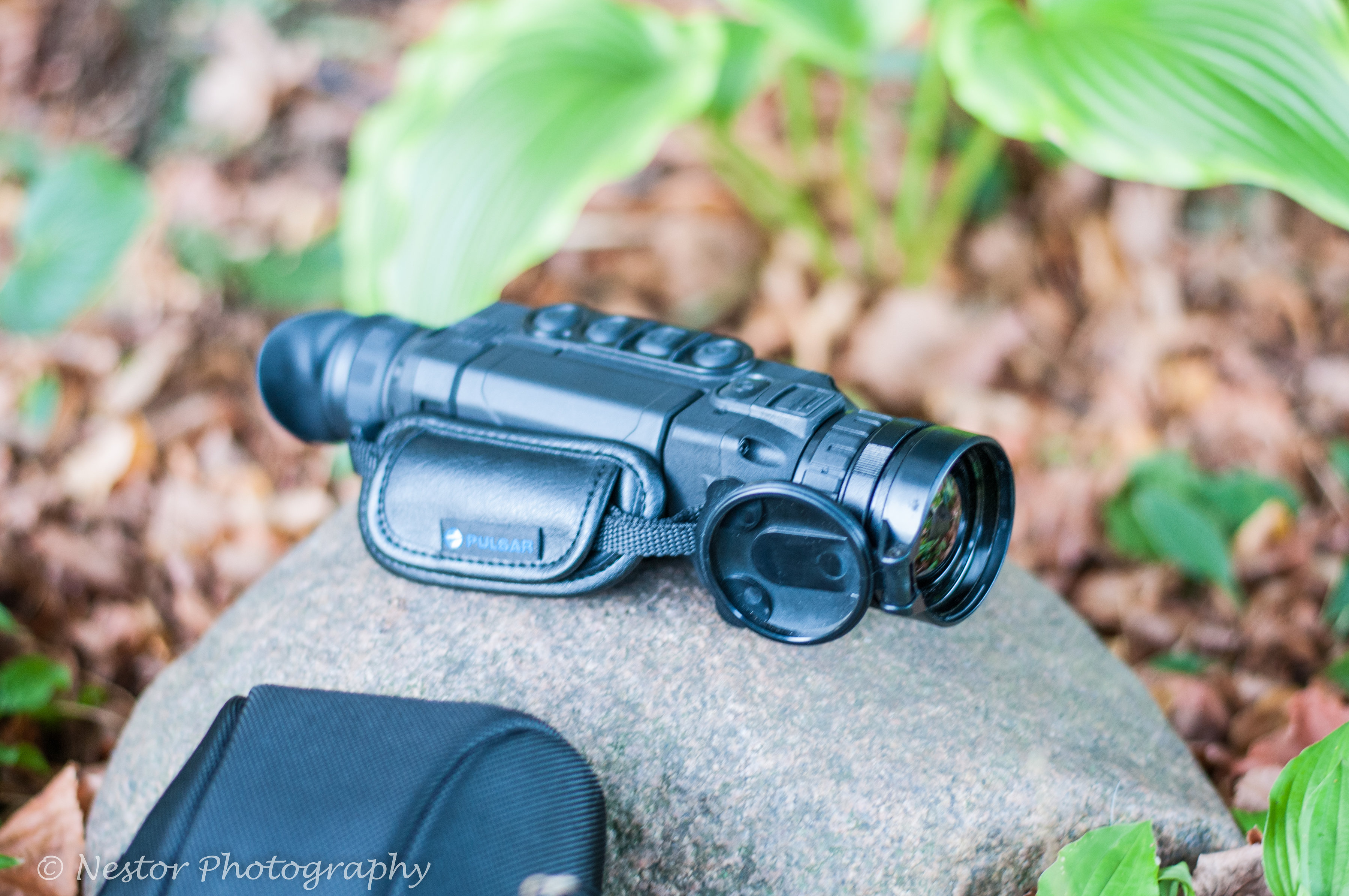
During my testing, I found many positive attributes to thermal imaging, and a few negatives, too.
First, thermal imaging is nothing like Hollywood portrays it. It can’t see through walls, but it can see through brush and the dark of night.
I took the scope for a woodland walk and came to this otherwise-hidden scene: big whitetail doe with her yearling fawn. Using the built-in video recorder, I captured the moment in time. Watch the video recording and observe how the “Hot Red” color setting worked in thick woods. Also, watch as the heat signature shows up differently behind brush and trees.
A big doe and her yearling out for a morning stroll Pulsar
Posted by Eric Nestor on Tuesday, September 4, 2018
I also noticed the cooler the area was, the easier it was to pick up thermal images. In the heat of the day, I had to remember the ground, trees and buildings would have hot spots.
Let’s look at the features of this fully waterproof scope. Opening the box, I found the Helion Thermal Imaging Scope with IPS5 battery pack, battery charger with mains charger, USB cable, carrying case, hand strap, user manual and lens cloth. Here are the specifications:
- Sensor: 640×480 @ 17 µm
- Magnification: 2.5-20x (smooth zoom)
- Detection range: 1800 m
- Color palettes: 8
- Wi-Fi module: integrated
- Video/sound recorder: integrated
- Objective lens: interchangeable
- Operating temperatures: -25 … +50 °C
The eight color palettes offer different contrast for viewing. I took photographs using the Pulsar Helion Thermal Imaging Scope viewing the same two deer in the above video to show the differences.
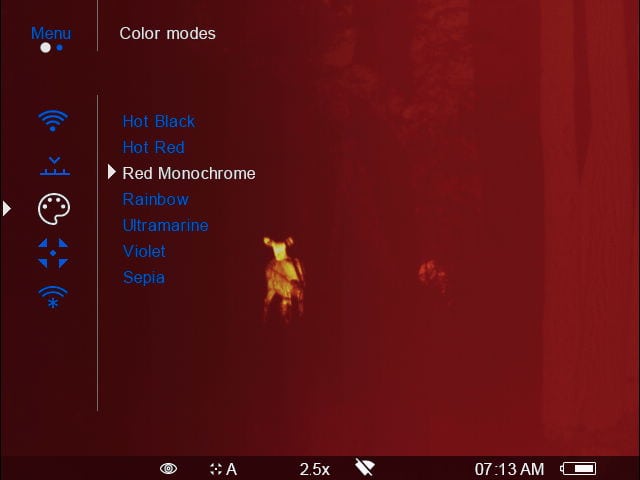
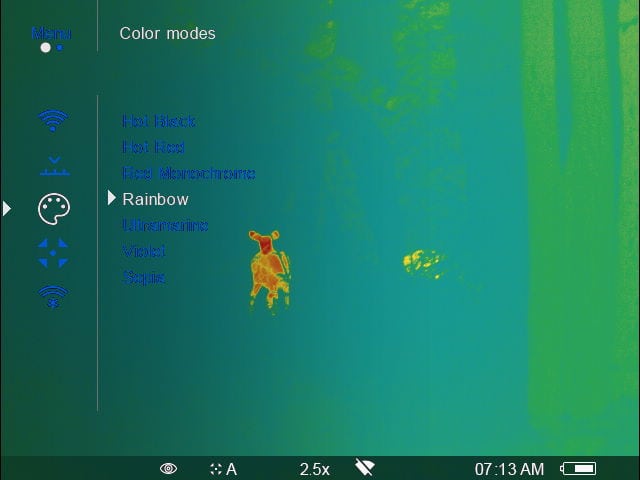
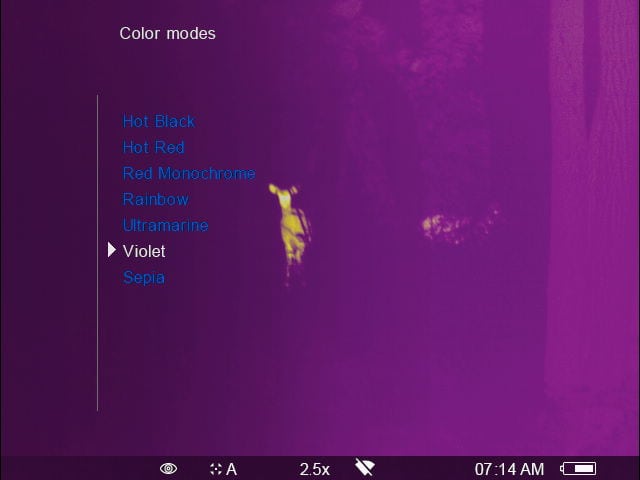
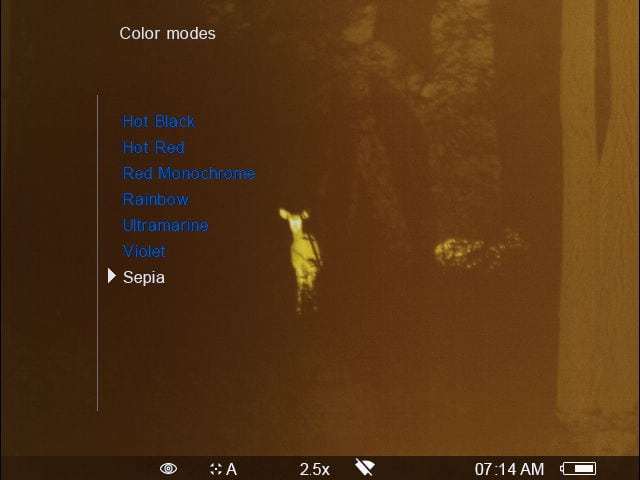
“Hot Black” is one of my personal favorites for the sharp contrast. This high resolution thermal monocular is quite handy out in the woods.
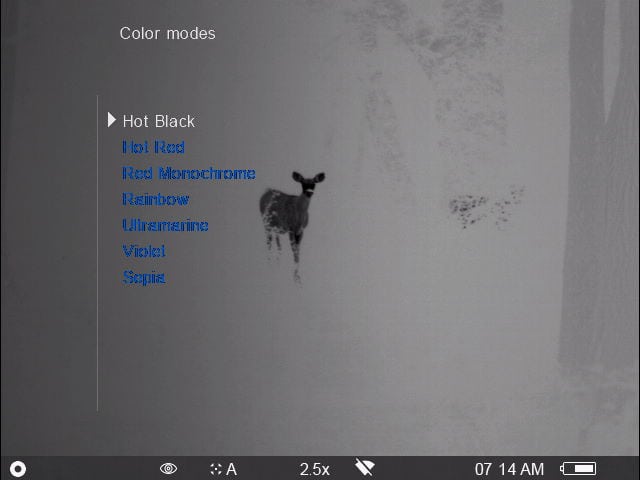
Smaller animals such as this squirrel show up really nicely day or night with the Hot Red color mode.
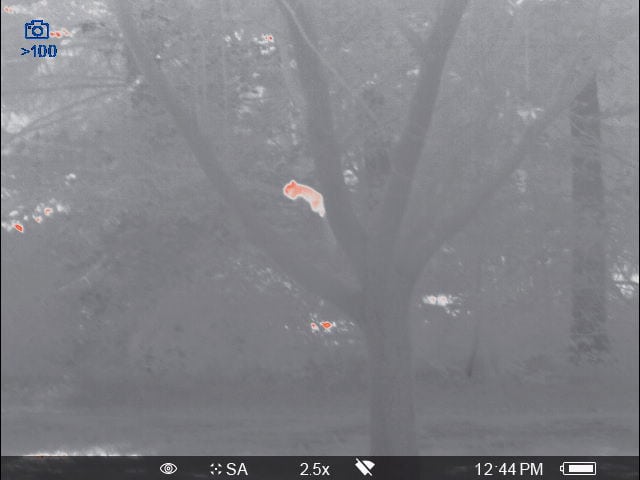
I actually caught this woodland squirrel urinating on the forest floor. The heat from the urine stands out quite well.
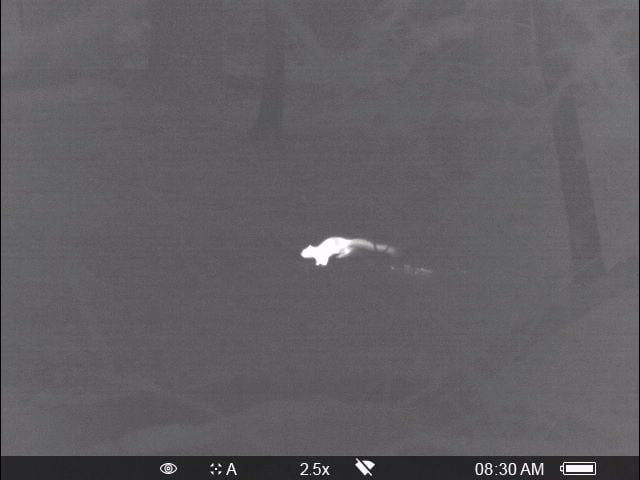
Here is a view of the same squirrel through the Hot Red color mode. This mode has become my personal favorite, thanks to the contrast it supplies the viewer. Hot Black would be a close second.
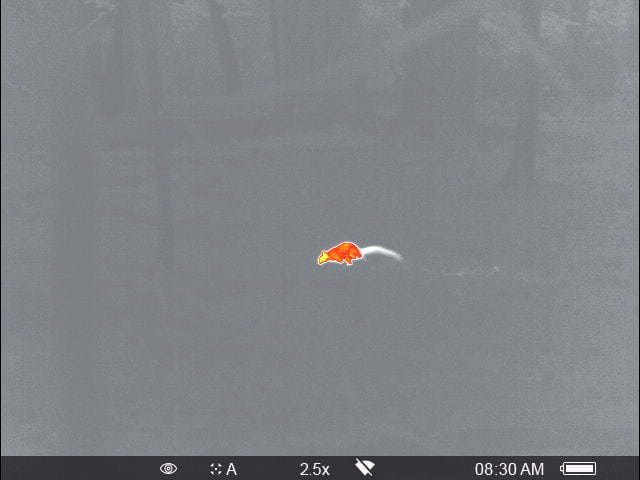
This recently used deer bedding site lit up like a light bulb through the scope. That’s certainly a useful feature when scouting for game!
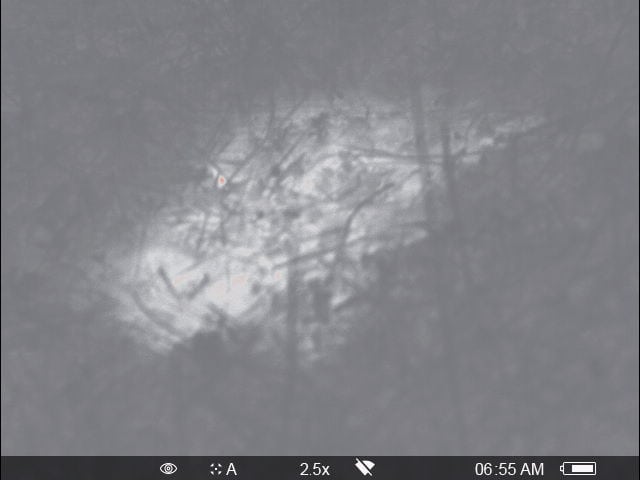
Canada geese fly overhead in the nighttime sky. Notice also how warm the power lines are compared to the cool September sky.
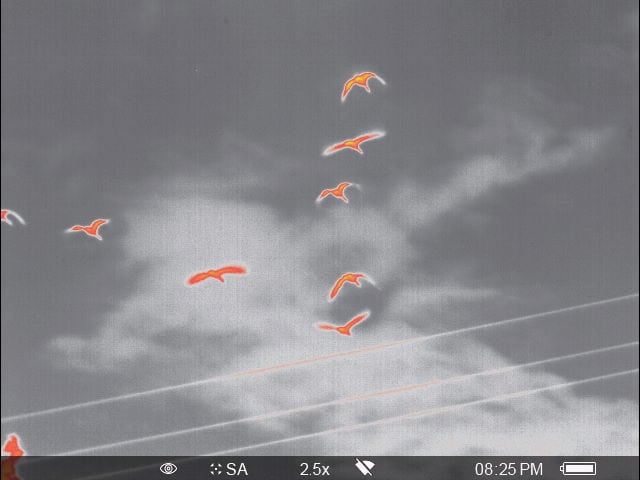
Vehicles give off a ton of heat. Check out the heat signature of this motorcycle and its rider. Cars, airplanes, boats and trains give off quite a light show, too. Place a hand on a wall and you’ll be able to see the heat signature from that hand clearly. Buildings and trees that absorb the sunlight will be warmer than the surrounding shaded areas. Also rotting logs give off a thermal glow due to heat from decomposition. It’s important to remember these facts when using any thermal imaging device.
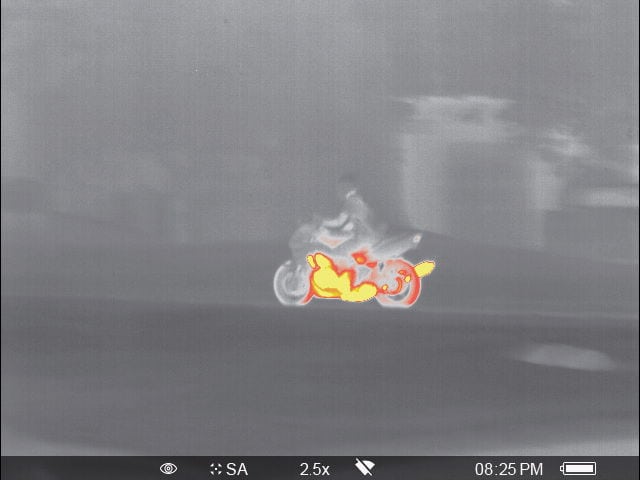
When using the Pulsar Helion Thermal Imaging Scope, I noticed temporary loss of any night-vision in the viewing eye. If you’re using this in conjunction with a firearm for hunting, I’d suggest using your non-shooting eye to look through the thermal scope. When the time for a shot comes, your dominant eye will be ready.
Be aware that just walking through the woods at night with eyes glued to the unit might cause you to fall. Thermal imaging won’t let you see the trail, but only the heat signatures around you.
The stadiametric rangefinder takes a little time to get used to for determining animal distances. It’s quite handy after some practice. Using the stream vision app, the integrated WiFi will share photos and videos online if you wish to. The battery life of the power supply was quite long. The battery type is removable and charges quickly from a supplied USB cord. There’s no need to buy standard batteries. That’s very important on an all-night hunt or varmint stakeout.
In summary, I was amazed by how well heat signatures showed up on this scope. The field of view worked very well for scanning, too.
In a cool area, I could even view song birds more than a 100 yards away. Chipmunks and squirrels came out of hiding and larger game really lit up the scope.
The Pulsar Helion Thermal Imaging Scope is great for scouting. For hunting, I’d recommend a weapon-mounted thermal-imaging riflescope for maximum effectiveness. That would be an incredible asset to any varmint hunter where legal. Make sure you check all laws before heading out in the woods with any thermal device, especially while armed.
You can find the Pulsar Helion Thermal Imaging Scope on Pulsar’s easy-to-navigate website.
Do you like articles about the outdoors? Click here to view more articles by Eric Nestor. You can follow him @ericthewoodsman on Twitter, The Classic Woodsman on Facebook, and @theclassicwoodsman on Instagram. You can view more Nestor Photography photos at Nestor Photography.
NEXT: FIREARM REVIEW: HENRY REPEATING ARMS BIG BOY COLOR CASE HARDENED LEVER ACTION RIFLE
WATCH
The post Field Test: Pulsar Helion Thermal Imaging Scope appeared first on Wide Open Spaces.

